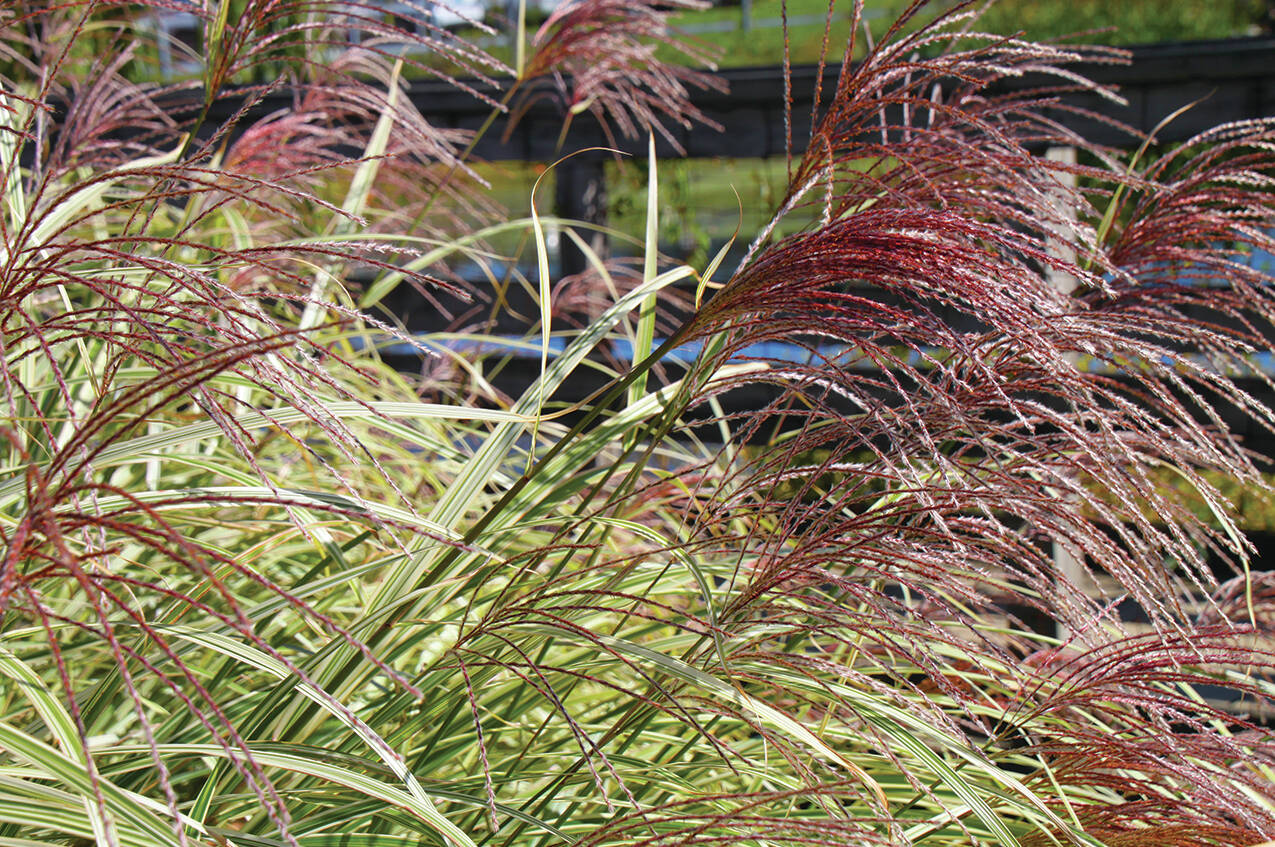Clallam County PUD and Clallam Conservation District are asking residents to conserve water in response to a state-wide drought emergency declaration from the Department of Ecology. Regardless of your source of water, now is an essential time to conserve.
What steps can homeowners take to conserve water in the garden and landscape?
Good watering practices are key to water conservation in the garden (see Sequim Gazette’s “Get It Growing” from May 8). Homeowners should also consider longer-term steps to conserve water since seasonal drought conditions are likely to continue or recur. Here are a few ideas.
Improve water retention in your soil.
Make the best use of the water you apply to your garden and landscape by preventing water loss through evaporation and run-off. If you have sandy soil, incorporate organic matter (such as compost, manure or a cover crop) into your soil to improve water infiltration and water holding capacity. Organic matter can store water for future use by plants, resulting in less water stress during both wet and dry periods.
Mulch your garden. Mulch minimizes evaporation of moisture from the soil and allows water to pool on the soil surface, enhancing absorption. Mulch also diminishes the force of rain and irrigation water, helping limit soil compaction and runoff.
If you have a lawn, leave grass clippings on top of your lawn after you mow. Grass clippings act like a protective cover, keeping moisture in the soil and preventing sun damage to your grass; they also add nutrients to your lawn as they break down.
If you have trees and shrubs, consider building berms (slightly raised areas) around the base of these plants to help direct water to the root zone and reduce water loss through run-off.
Select plants with low water requirements.
If you have the option of putting in new plants, select drought-tolerant species and cultivars. Plants with low water requirements tend to have thick, waxy or hairy leaves, leaves that are small or fine such as the needles of a conifer or leaves with deep indentations (lobes) such as those of a maple tree.
Woody perennials can store water in both their roots and their trunks and are more drought-tolerant than herbaceous perennials.
Many native plants have low water requirements and are also a good choice. (See sidebar.)
Remember, “drought-tolerant” doesn’t mean that a plant doesn’t need water at all. It just means that the plant can withstand periods of dryness. Any newly installed plant needs supplemental water until it becomes established (about one to three years after planting). In addition, even a drought-tolerant plant needs occasional water after establishment. Water deeply, down to the root zone, when you do water.
As you install new plants, consider arranging them in groups with similar water requirements (sometimes called hydrozones). Situating plants in this manner increases the likelihood that all plants in a group will receive the desired amount of water and not be over- or under-watered.
Reduce the size of your lawn.
The lawn is one of the biggest consumers of water in the landscape. Consider replacing your lawn (or parts of it) with one of the following options.
Mulch under your trees. Grass doesn’t grow particularly well under trees and your trees will benefit from better moisture retention and less competition from the grass roots. Use more permanent mulches, such as bark chips, pine needles or gravel. Mulches that biodegrade quickly, such as leaves, sawdust and grass clippings, are not suited for this purpose.
Replace parts of your lawn with low-growing drought-tolerant ground cover such as kinnikinnick, bishop’s hat or beach strawberry. Ground covers are well-suited to steep slopes that are difficult to mow and shady areas where the grass doesn’t grow well. Ground covers, however, are not appropriate for high traffic areas and will not be suitable for playing or sitting.
Another option is an ecology lawn (sold under a variety of trade names). An ecology lawn is a mix of turf-type grasses (usually perennial ryegrass) and broad-leaf perennials (e.g., English daisy, yarrow, and white and strawberry clover) that requires little if any supplemental watering after establishment. The grass stays green from fall through spring and the perennials are green when the grass goes dormant (and turns brown) over the summer.
If you decide to maintain a lawn, plant grass that is adapted to our climate, usually a combination of turf-type perennial rye and tall fescue grasses.
Also consider intentionally letting your lawn go dormant over the summer. Most grass types can go for 30 days without water. Although the grass will turn brown during periods of infrequent irrigation, it will become green again when rain returns in the fall.
These are just a few ideas to conserve water in your garden and landscape. For more information, view “Drought Tolerant Landscaping for Washington State” by Charles A. Brun (EM087E). This WSU publication can be downloaded free of charge at pubs.extension.wsu.edu/drought-tolerant-landscaping-for-washington-state-home-garden-series.
Jeanette Stehr-Green is a WSU-certified Clallam County Master Gardener.
Drought-tolerant native trees and shrubs
• Trees
Bitter cherry (Prunus emarginata)
Douglas fir (Pseudotsuga menziesii)
Oregon white oak (Quercus garryana)
Pacific madrone (Arbutus menziesii)
Ponderosa pine (Pinus ponderosa)
Shore pine (Pinus contorta)
Western red cedar (Thuja plicata)
• Shrubs
Blueblossom (Ceanothus thyrsiflorus)
Chokeberry (Aronia arbutifolia)
Blue elderberry (Sambucus mexicana)
Evergreen huckleberry (Vaccinium ovatum)
Hairy manzanita (Arctostaphylos columbiana)
Mock orange (Philadelphus lewisii)
Oceanspray (Holodiscus discolor)
Oregon grape (Berberis nervosa [low Oregon grape] and Berberis aquifolium [tall Oregon grape])
Nootka rose (Rosa nutkana)
Pacific ninebark (Physocarpus capitatus)
Red flowering currant (Ribes sanguineum)
Western serviceberry (Amelanchier alnifolia)
— From Linda R. McMahan, “Incorporating Pacific Northwest native plants into your water-wise landscapes,” Oregon State University, 2018. (tinyurl.com/SEQwaterwise)



